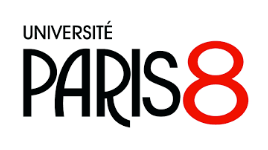12h00
salle 159
Adam Schembri (U. Birmingham)
Issues in the analysis of sign language morphology:
Some recent insights from indicating verbs, Construction Grammar and sociolinguistic typology
One of the key big picture questions in the field of sign language linguistics is: sign languages have now been recognised by linguists as natural human languages for over half a century, but what kind of languages are they? In my work over the last two decades, I have explored some key aspects of the visual-gestural modality (such as the structures de grande iconicité, as they are called in the French tradition), the typology of sign languages, and the sociolinguistic situation of deaf communities. Together with colleagues in Australia and the United Kingdom, I have approached this fundamental research question about the nature of sign languages using three distinct but complementary approaches: variationist sociolinguistics, cognitive/functional theories of grammar, and corpus linguistics. In this paper, I discuss our recent corpus-based work on the indicating verb system in British Sign Language, and explore the existing evidence that challenges the widespread analysis of this system as marking person agreement. Building on the proposal by Liddell (2000, 2003) that these forms are a typologically unique fusion of lexical signs and gesture, I then explore our work on developing a Construction Grammar account of this aspect of BSL morphology. In particular, we argue that indicating verbs represent a sign language equivalent to multimodal (i.e., speech and gesture) constructions in spoken language. I will then step back to consider the role of indicating verbs in the overall morphological system of sign languages. In order to do so, I will sketch how the notion of morphological ‘complexity’ proposed by Trudgill (2011) applies to sign language grammars. In this work, Trudgill stresses the possible relationship between key social factors in speech communities and degrees of morphological ‘complexification’. Using Trudgill’s criteria, it might be argued that most sign languages are languages with relatively low to moderate levels of morphological ‘complexity’, in contrast to other accounts of sign language grammar in the literature (e.g., Aronoff et al., 2005). However, this account is unsurprising when we consider how key social characteristics appear to influence the typological nature of languages, including the highly variable nature of sign language transmission and the presence of large numbers of adult second language learners in the signing population. I will close by exploring the implications the study of indicating verbs, morphological ‘complexity’ and sociolinguistic typology have for our understanding of sign languages, and their relationship to both spoken languages and gestural communication.



